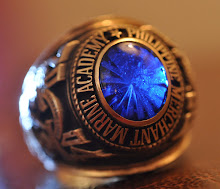Answer for Trivia of month: Claustrophobia
Thursday, June 26, 2008
Claustrophobia
Claustrophobia is one of the most common phobias in
A phobia is a form of anxiety disorder that leads to an irrational fear of a certain situation or object. The individual may be claustrophobic or the claustrophobia may be a part of a generalized a generalized anxiety disorder (GAD). A prolonged or intense anxiety can lead to phobia.
Claustrophobia is designated as a situational phobia, because it is triggered by a certain situation.
Causes of Claustrophobia
Claustrophobia can develop from either a traumatic childhood experience (such as being trapped in a small space during a childhood game), or from another unpleasant experience later on in life involving confined spaces (such as being stuck in an elevator).
When an individual experiences such an event, it can often trigger a panic attack; this response then becomes programmed in the brain, establishing an association between being in a tight space and feeling anxious or out-of-control. As a result, the person often develops claustrophobia.
Symptoms of Claustrophobia
When a person with claustrophobia finds herself in a restricted space, her body responds in certain ways.
Claustrophobia symptoms can include:
- sweating
- accelerated heartbeat
- nausea
- fainting
- light-headedness
- shaking
- hyperventilation
- a fear of actual imminent physical harm
Some common situations that can cause anxiety in claustrophobia sufferers include:
- Being inside a room: the individual will look for an exit, for example, at a movie theatre
- Being inside a car: the individual will avoid driving on the highway or major roads where there is heavy traffic
- Being inside a building: the individual will avoid taking elevators
- Being at a party: the individual will stand near a door
- Being on an airplane
- While undergoing an MRI or CAT scan (also referred to as MRI claustrophobia and CAT scan claustrophobia, respectively)
In extreme cases, the very sight of a closed door can lead to feelings of anxiety in the individual.
Claustrophobia can have crippling social and psychological effects since the patient will often avoid situations in which she thinks she will have an anxiety attack, leading to isolation and depression.
Claustrophobia Treatment
There is no cure for claustrophobia, however, there are several forms of treatment that can help an individual control her condition.
Treatment for claustrophobia can include behavior therapy, exposure therapy, drugs or a combination of several treatments.
Behavior therapy includes identifying trigger points and recognizing that one's reactions to these triggers are learned instead of natural; through visualization and positive thinking, the individual learns to disassociate feelings of danger with the confined space.
Neuro-Linguistic Programming is a type of behavior therapy that deconstructs the individual's preconceived view of reality, reducing the anxiety provoked by a specific situation or setting.
Flooding is a type of exposure treatment in which the individuals exposed to a situation until the anxiety attack passes; a less extreme form of exposure treatment is counter-conditioning. Counter-conditioning includes behavior therapy, as the individuals taught visualization and relaxation techniques before being slowly reintroduced to the trigger situation.
Medications prescribed to help treat claustrophobia include anti-depressants and beta-blockers, which help to relieve the heart pounding often associated with anxiety attacks.
Alternative claustrophobia treatments include regression hypnotherapy, in which hypnotherapy is used to remember the traumatic event that led to the individual's claustrophobia. The patient is taught to see the event with adult' eyes, which helps to decrease the sense of panic that it has instilled into their minds.







0 comments: to “ Answer for Trivia of month: Claustrophobia ”
Post a Comment